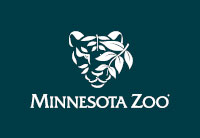As my plane started to descend over Madagascar, I was so thrilled to think that there were lemurs in the forests—and that I was going to get to see them! When I finally did see one, on my first day in the forest, I actually had tears in my eyes. I had never seen such an amazing sight. That same scene played out almost every day (sometimes several times daily) during my trip. Getting to walk out into the forest and just find lemurs eating, resting, moving around in the trees, and doing everything else that they do was incredible! Each time we saw a lemur, we recorded data, documented GPS locations, and recorded habitat information and behavioral data of that animal. We also looked for other animals including frogs, lizards, geckos, chameleons and snakes to name a few. Upon spotting these animals, we also recorded their locations and what type of habitat they were found in (stream, log, leaf litter, etc.). Another part of my conservation trip included making lesson plans for the local school children that lived in the village. My team taught them about why different animals need to live in different types of habitats. In order to help the adults in the village use less wood when cooking over an open fire, which was necessary to bring down the high levels of smoke, we built clay stoves for them to contain the heat. Some of my most interesting observations during the trip were found at the outhouse. There was no electricity or running water in camp, and the “loo” was down a grassy path behind the trees. It seemed like each day I found something new there: a scorpion eating a cockroach, geckos, moths, butterflies, frogs—and a snake. This experience taught me to take a camera with me wherever I went—and I do mean wherever. My trip to Madagascar was one of the most memorable things I have ever done. I am very lucky to have been able to travel to such an amazing country and help out some of the world’s most endangered primates




Get Social